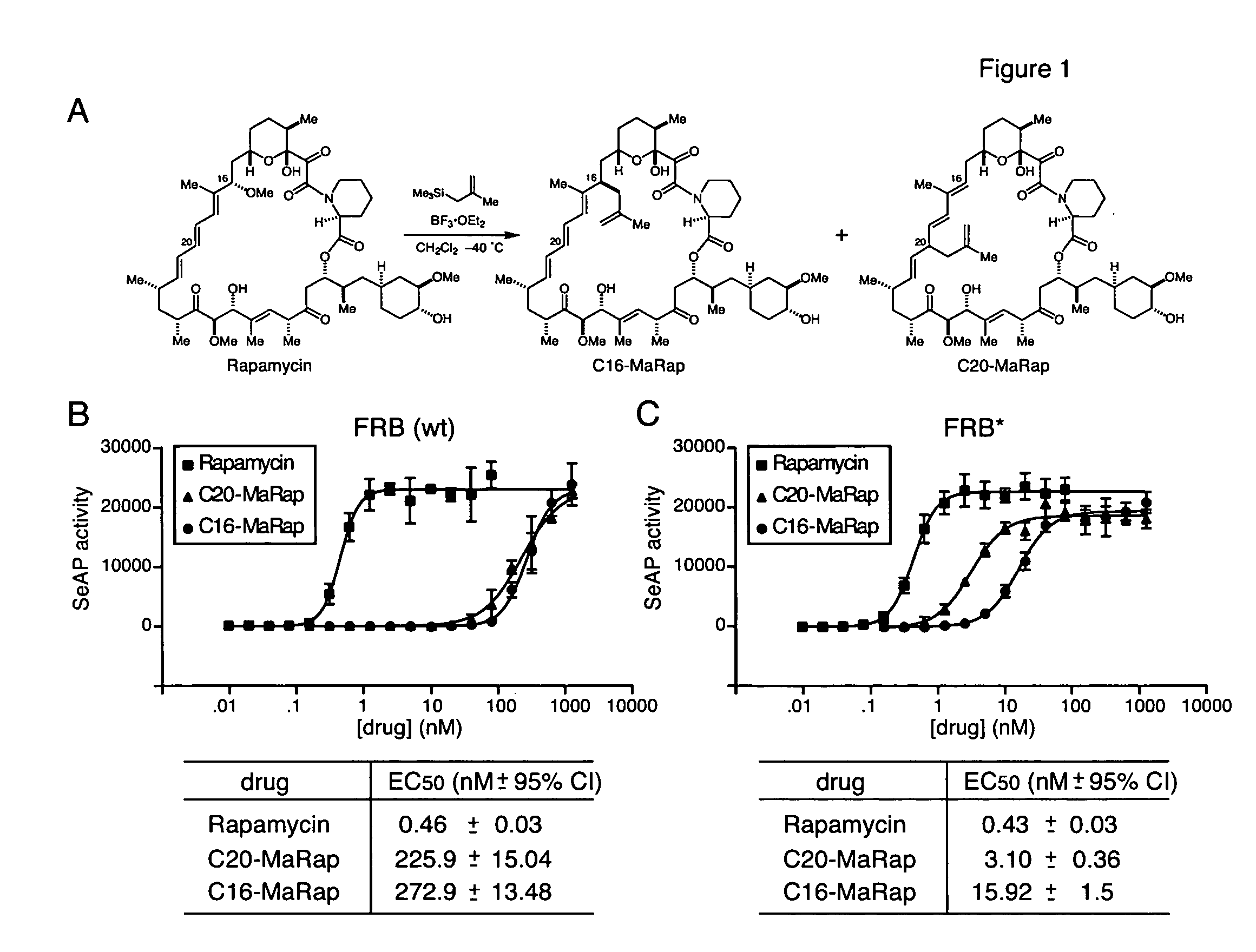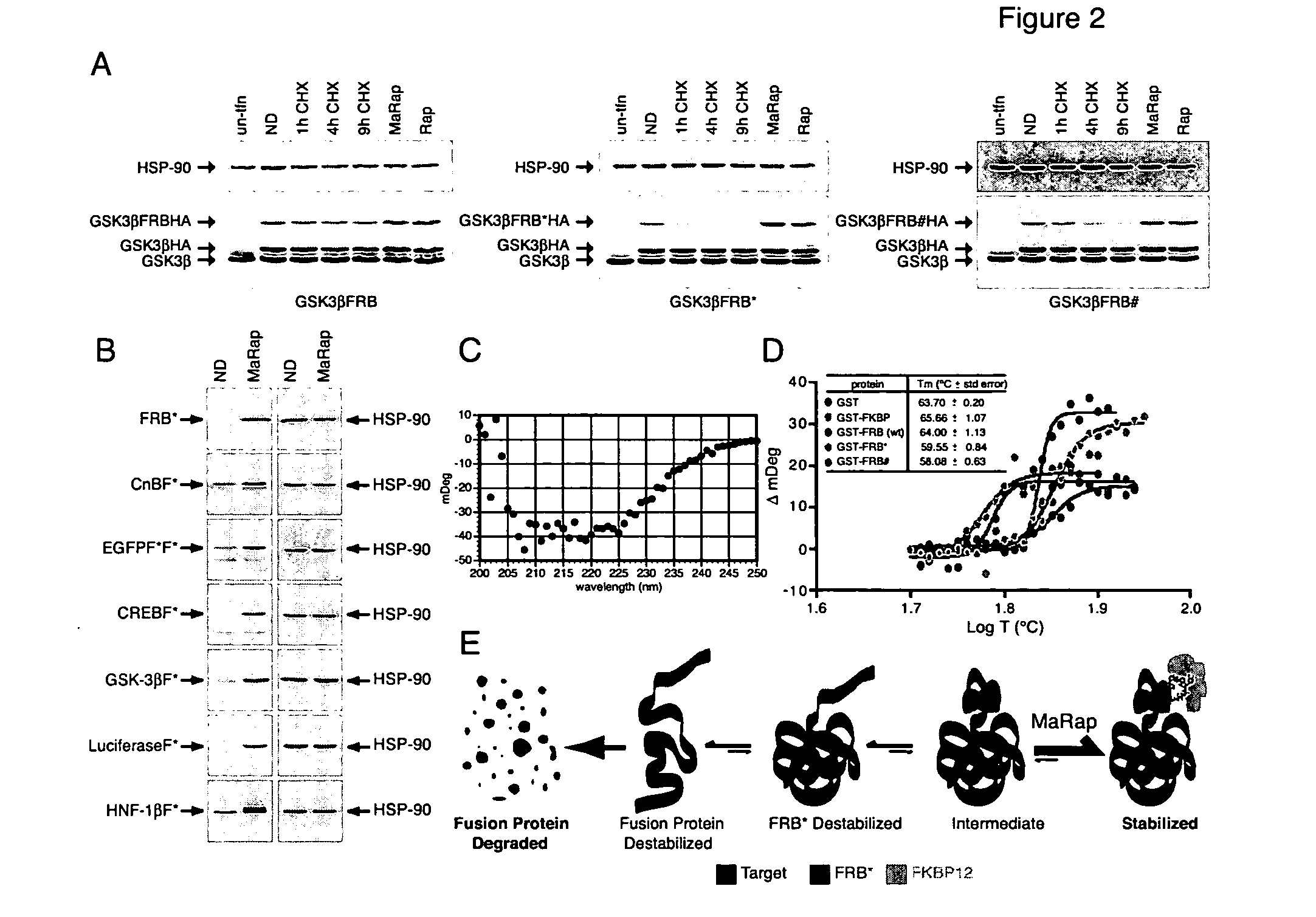Conditional allele system
a technology of alleles and conditions, applied in the field of protein regulation, can solve the problems of insufficient ability to resolve specific and direct protein functions, insufficient temporal control, and limited chemical genetic studies in animals
- Summary
- Abstract
- Description
- Claims
- Application Information
AI Technical Summary
Benefits of technology
Problems solved by technology
Method used
Image
Examples
Embodiment Construction
[0050] Methods and compositions are provided for employing conditional alleles that allow for the rapid and reversible regulation of a protein function of a target protein. A system is employed originating with a nucleic acid sequence for fusing with nucleic acid encoding a target protein or as a DNA or RNA molecule fused to nucleic acid encoding a target protein. The expression product of the nucleic acid sequence when fused to that encoding the target protein destabilizes the target protein, usually leading to its degradation. Employed with the nucleic acid sequence in the system is a small organic molecule that binds to the expression product and stabilizes the fusion protein by itself or by recruiting an endogenous protein.
[0051] The method employs a fusion protein of at least a functional portion of a target protein and a destabilizing polypeptide in a cell. Binding of a small non-toxic stabilizing molecule to the fusion protein in the cell stabilizes the fusion protein to pro...
PUM
| Property | Measurement | Unit |
|---|---|---|
| Atomic weight | aaaaa | aaaaa |
Abstract
Description
Claims
Application Information
 Login to View More
Login to View More - R&D
- Intellectual Property
- Life Sciences
- Materials
- Tech Scout
- Unparalleled Data Quality
- Higher Quality Content
- 60% Fewer Hallucinations
Browse by: Latest US Patents, China's latest patents, Technical Efficacy Thesaurus, Application Domain, Technology Topic, Popular Technical Reports.
© 2025 PatSnap. All rights reserved.Legal|Privacy policy|Modern Slavery Act Transparency Statement|Sitemap|About US| Contact US: help@patsnap.com



